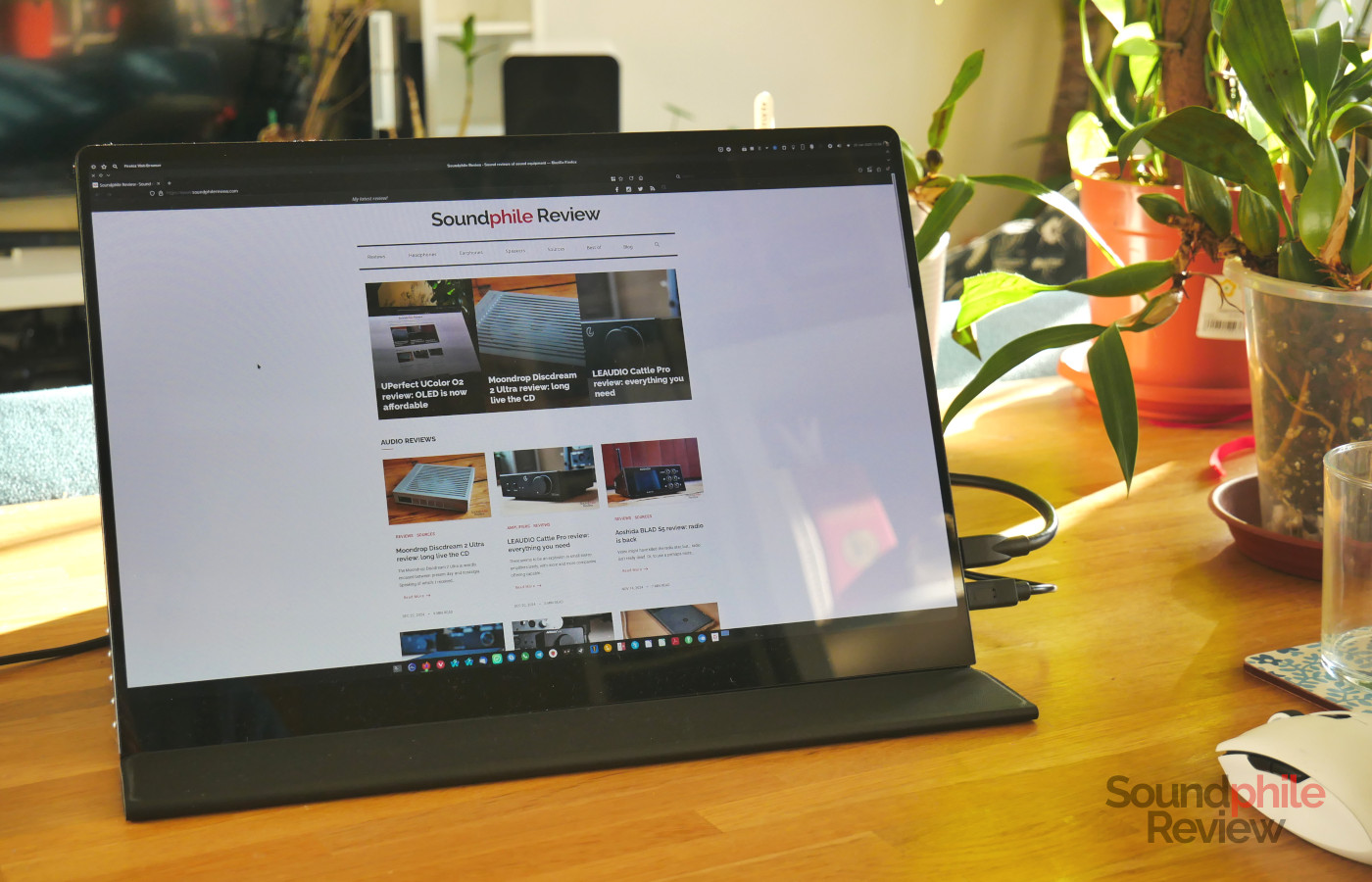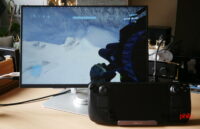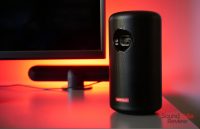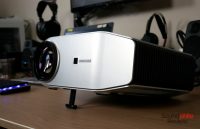OLED has been the technology of the future for over a decade and now it is finally becoming more mainstream. When I started reviewing tech devices, 13 years ago, we had the first phones with an AMOLED screen; fast forward to the present day and we finally have larger screens with a similar technology. The UPERFECT UColor O2 is the proof that these screens are getting more and more affordable, as it offers a 16-inch OLED panel – a fact which, in itself, was unthinkable just a few, brief years ago – in a portable factor and with touch sensitivity on top of it, too. And the best thing is that it comes with an affordable price tag.
Disclaimer: UPERFECT sent me a free unit for the purpose of this review. The UColor O2 retails for $349; the touch-capable version retails for $399.
TL;DR: recap
| Pros |
Cons |
| + Minimal bezels
+ Thin and light + Very high resolution + Vibrant colours thanks to OLED panel + 120 Hz refresh rate + 16:10 aspect ratio + VESA mount holes + Good accessory set |
– You need to use the power adaptor for best performance
– Integrated speakers aren’t great – Glossy, reflective glass |
Rating: 8.5/10
Packaging & Accessories
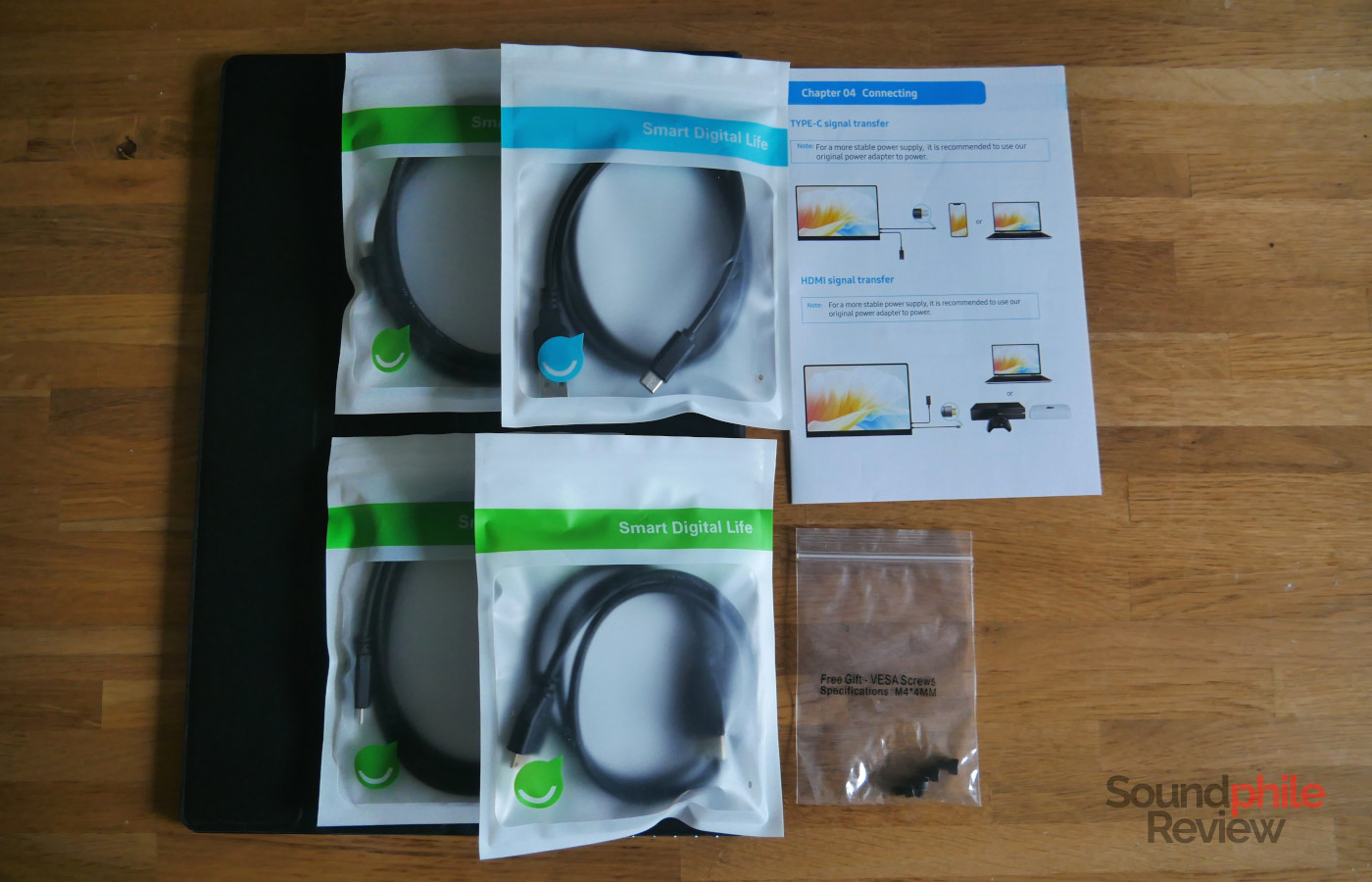
The UPERFECT UColor O2 comes in a simple, nondescript cardboard box (so generic it does not even have UPERFECT’s branding on it!) which contains the screen itself, a folio case, two 1-m USB-C to USB-C cables, a 1-m USB-A to USB-C cable, a 1-m HDMI to mini-HDMI cable, a 30 W power supply unit with USB-C output and a set of four screws to mount the display to a VESA-compatible stand. The supplied cables are quite short and, in fact, I have had to use my own cables in most occasions, as they were just not long enough.
Design & Build
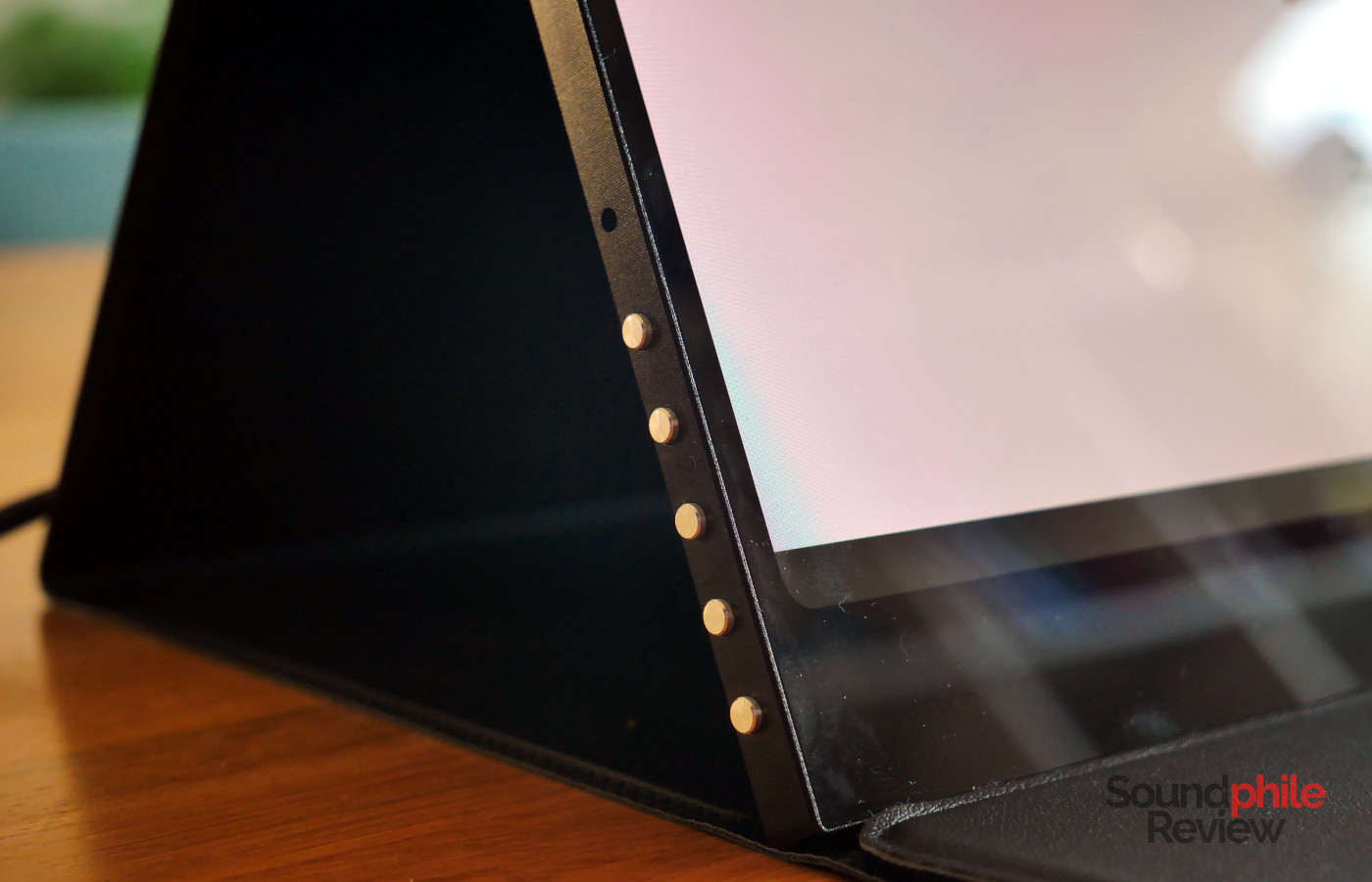
One thing about the UPERFECT UColor O2 is that it looks sleek. The front is covered by a glass panel that goes from edge to edge and it has minimal bezels, except for the bottom one which is 2 cm tall. The chassis, which covers the back and the sides, is made of aluminium and looks and feels sturdy enough to withstand carrying it around over time. The back is razor-thin at just 3 mm, though there is a small bump in the lower third in order to house the connectors, the buttons and the two 1-W speakers (the presence of which is indicated by holes in the chassis).
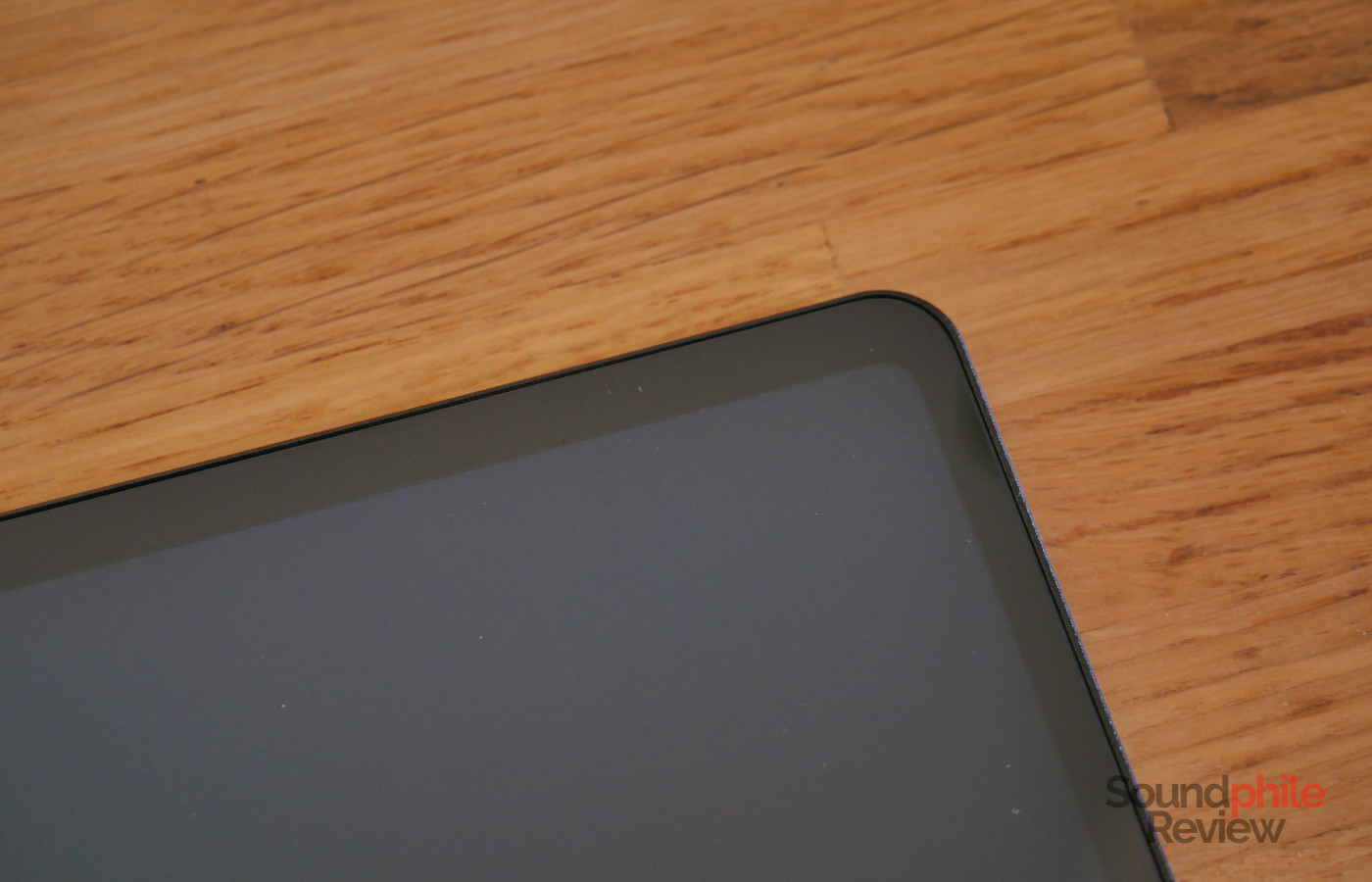
Continuing on the theme of sleekness, one thing I really like about the UColor O2 is that there are no logos anywhere, neither on the front nor on the back. This keeps it super-simple as well as anonymous – and I mean this in a positive way, as it means it blends in with any other devices and in any setting.
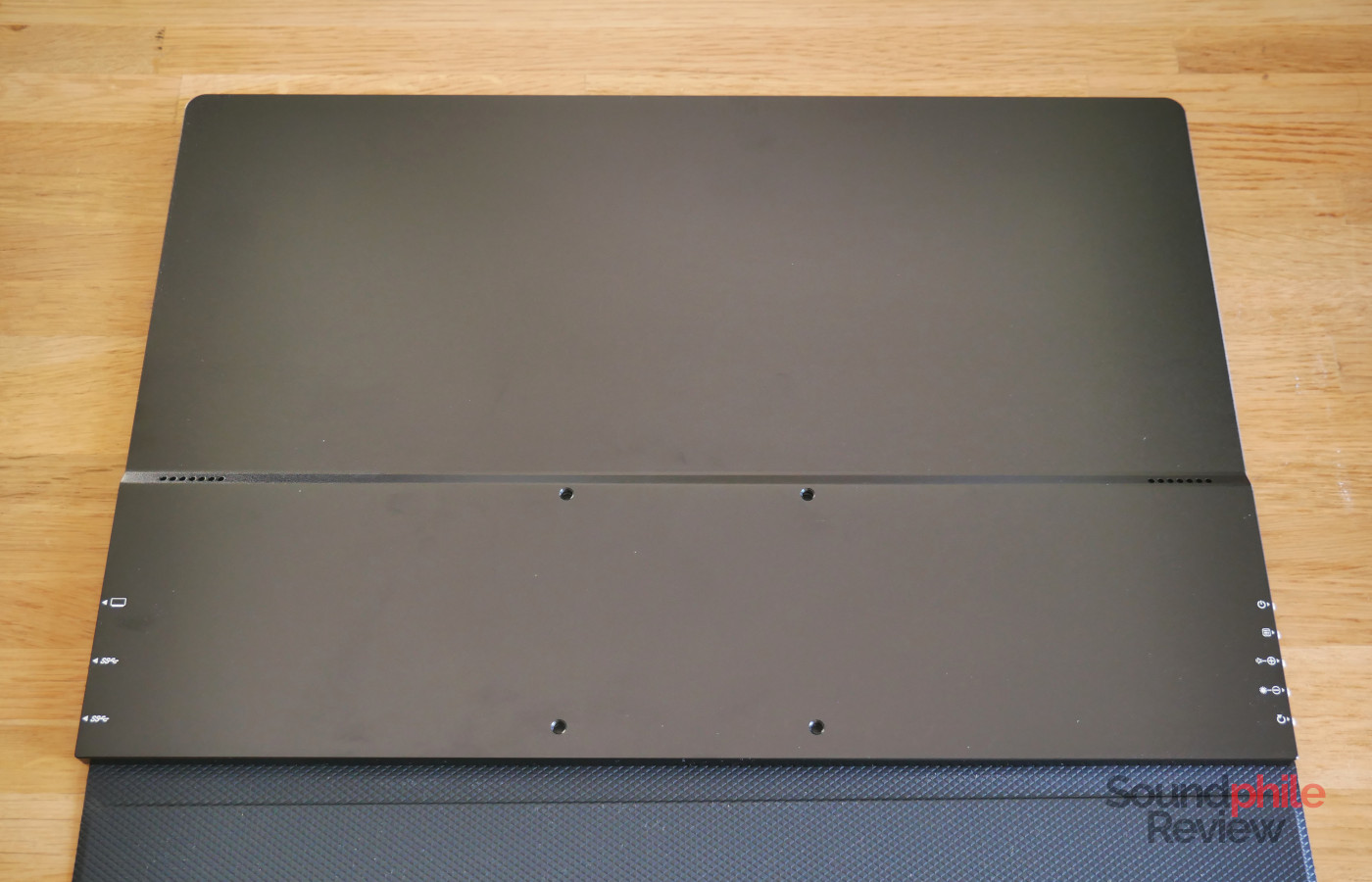
At 354 × 242 × 6.5 mm, the UPERFECT UColor O2 is quite portable and fits in any bag made for 15.6 or 16-inch laptops – in fact, it fits perfectly in my own bag made for 16-inch computers, with room to spare. The weight of 720 g is low enough that carrying it in your backpack will be easy and won’t add significant burden. It is definitely more portable than the 18-inch UPERFECT K118.
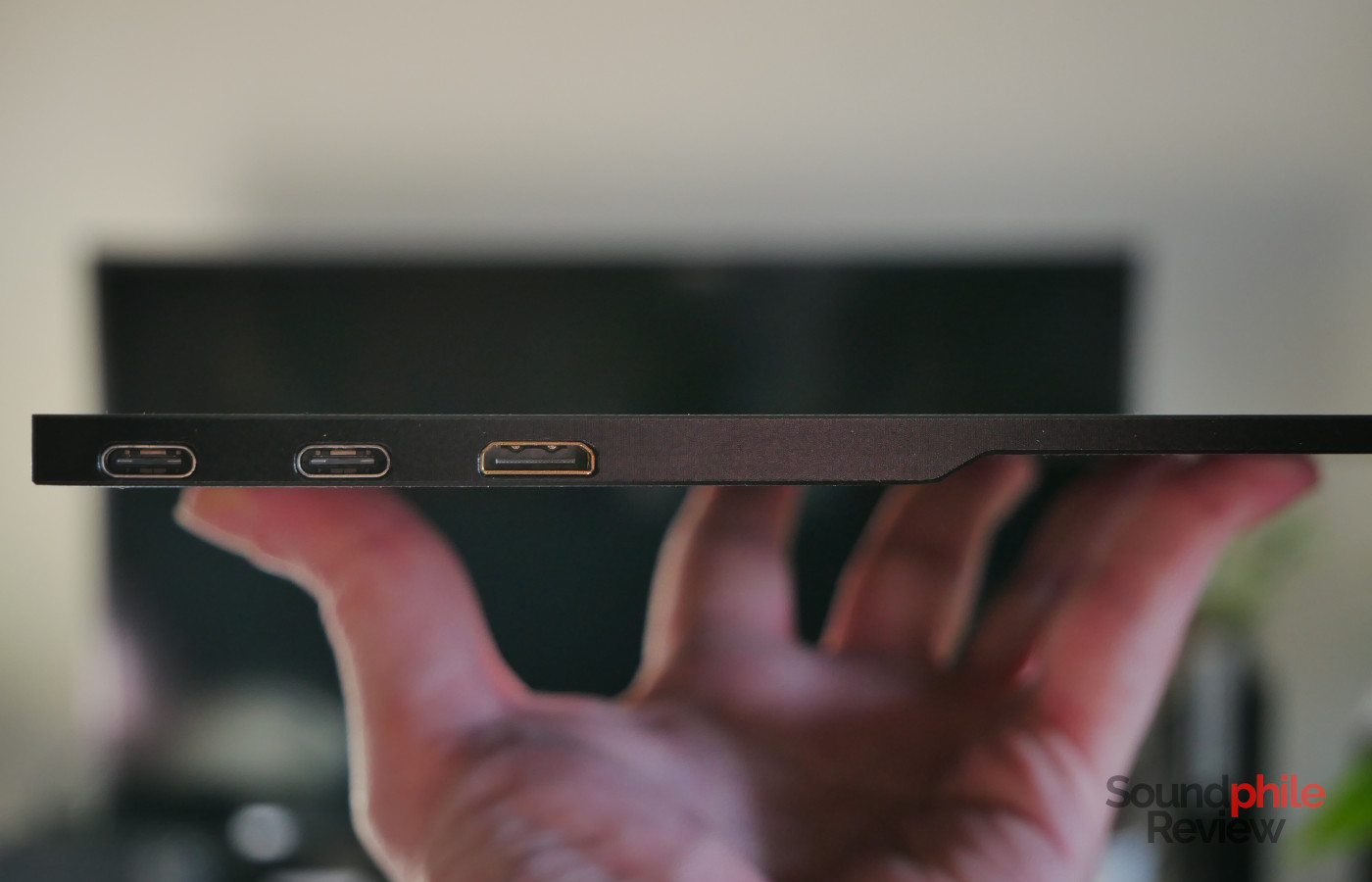
The control buttons are all on the left hand side, while the input connectors (one mini-HDMI and two USB-C) are on the right hand side. There are also 75 mm holes to mount the display to any stand or arm compatible with the VESA standard.
Build quality is very good and I can’t find any faults in it: the materials being used appear to be of good quality, the buttons are well-made and offer no play, and the ports’ cutouts are perfectly aligned.
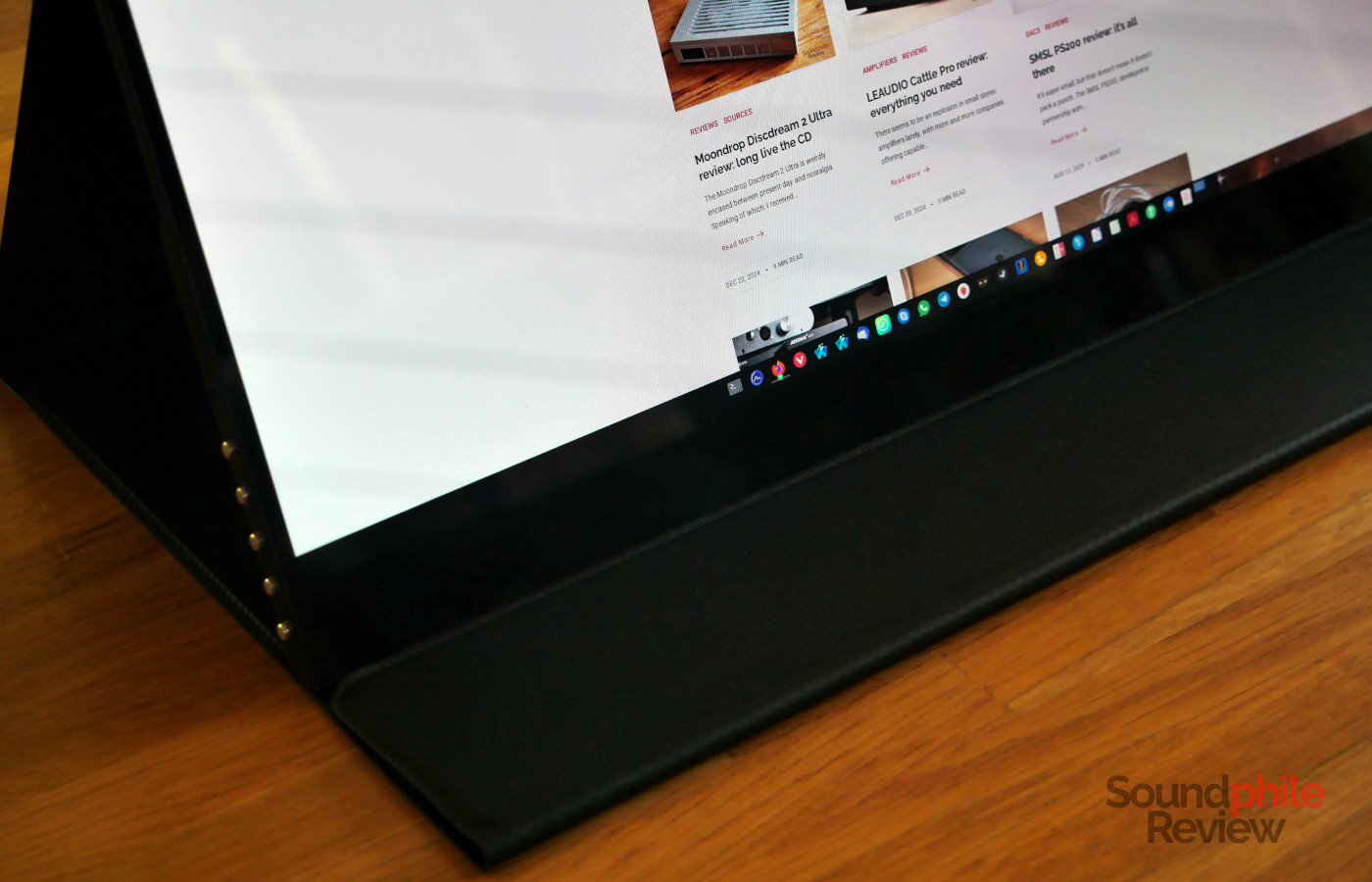
The folio case provided with the monitor appears to be of good quality, too, and it has a set of magnetic latches to keep it attached to the screen. Unfortunately these don’t seem to work to also keep it closed, so it will open if you give it the chance to. The case doubles as a stand: you can fold the front flap to create a small bump on which the screen will rest, standing at an angle of approximately 60°. This isn’t perfect as the magnets don’t seem to powerful and it sometimes takes a bit of convincing for it to stay in that position, but overall it works well enough. There are alternatives, like the stands that UPERFECT themselves sell – you can see the portable one in the pictures, but there are VESA-compatible ones, too.
Features & Specs
The UPERFECT UColour O2 uses a 16-inch OLED panel with a 2,880 x 1,800 resolution, which gives us a 16:10 form factor. The maximum refresh rate is set at 120 Hz, with 60, 75 and 100 Hz modes also supported. Declared response time is 1 ms and contrast ratio is 100,000:1, while colour gamut coverage is rated at 100% DCI-P3.
The panel advertises HDR compatibility, which is true up to a point. Let me explain. In order to have “true” HDR you have to offer compatibility with 10-bit RGB colours and very high maximum brightness (400 cd/m², which equals to 400 nits). The UPERFECT UColor O2 offers a maximum brightness of 500 cd/m², which is a very good value, but it does not offer “true” 10-bit RGB colours, instead offering 8-bit colours plus FRC. “FRC” stands for “Frame Rate Control” and is a technique used to emulate 10-bit colours without the panel actually offering it in hardware.
The way it works is the following: since our eyes have a limited capability to distinguish rapid changes (we may say they have a relatively low refresh rate!), the rather ingenious technique engineers have come up with is to display images with alternating colours in very rapid succession. This is the same concept as movies: rather than one continuous motion, movies “deceive” our eyes and brain by displaying rapidly alternating discrete images which are perceived as (more or less) continuous, as we can’t see the individual frames. In the case of FRC, this means our eyes see the same image in alternating colours, and this alternation is quick enough that what we perceive is the image as if it were using 10-bit colours, rather than 8-bit ones. In practicality, you won’t really see a difference between this and a true 10-bit monitor.
HDR has to be enabled in the monitor’s settings before it can be used: the screen advertises compatibility to the source, but it then does not work correctly if you feed it HDR images and it ends up displaying a washed-out, too-bright image. One thing to note is that image controls are disabled when HDR is enabled, so you can’t set the brightness. This can be quite inconvenient if you want to reduce brightness because you in a lowly-lit environment.
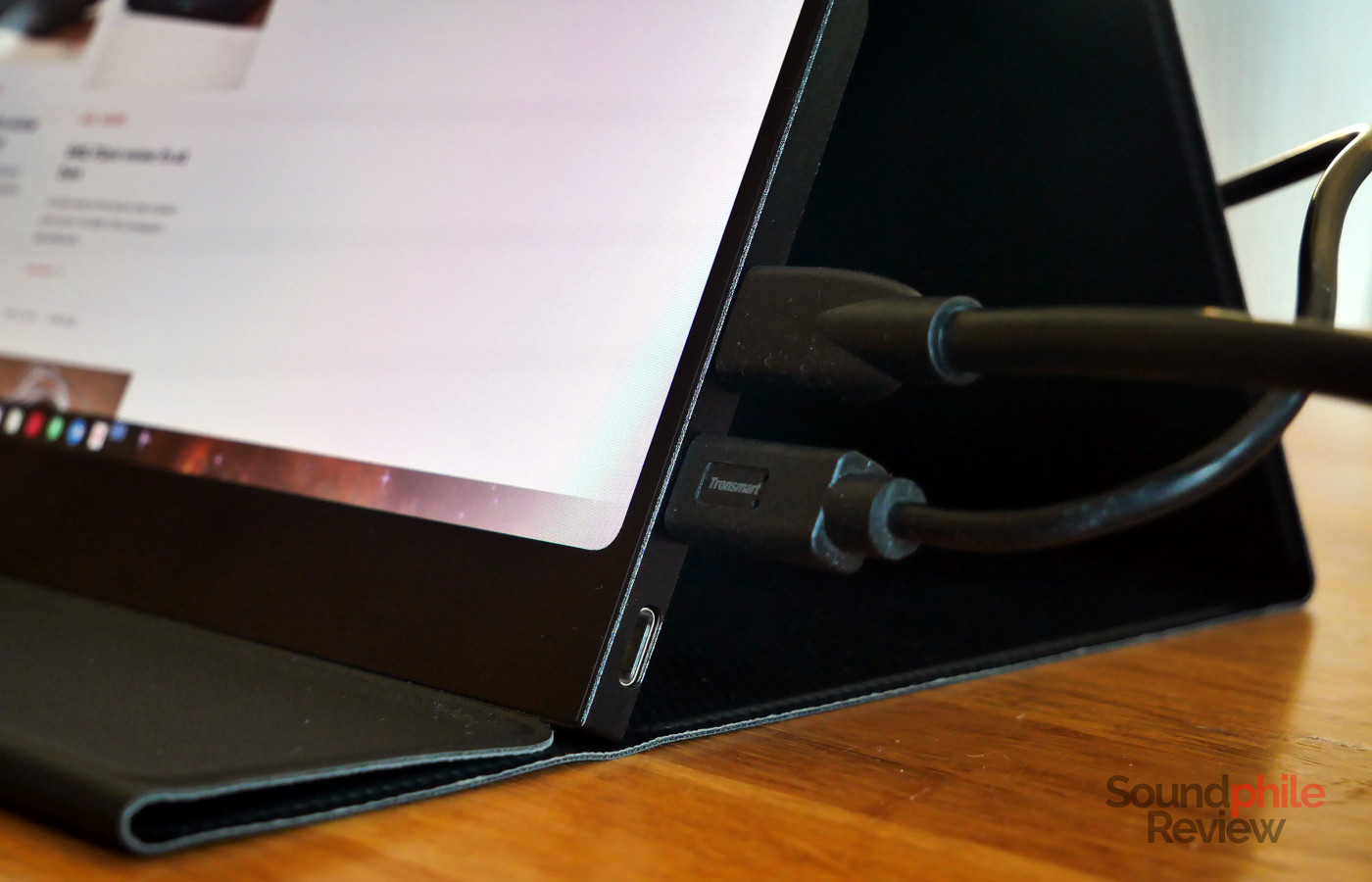
The UColor O2 does not support any variable refresh rate mode, so it is not compatible with FreeSync which is used by many consoles and computers (which correctly report the standard as being not available on the monitor).
UPERFECT included the DCR feature, short for “Dyamic Contrast Ratio”, which is used in LCD panels to increase the dynamic contrast by adjusting it dynamically with the image, by making dark scenes darker and bright scenes brighter. It’s a “simple” trick in the same vein as FRC. Maybe because of the fact that the UColor O2 uses an OLED panel, I couldn’t really tell a difference between enabling and disabling this setting.
Compatibility with the Steam Deck is of the plug-and-play variety: you just connect it using a USB-C cable and that’s it. The screen will provide some power to the Deck, too; using the stock power adapter, this won’t be enough to actually charge the Deck (or keep it charged), but it will lead to a much slower discharge. Similar considerations can probably be made for other handheld PCs.
A minor inconvenience when using the micro-HDMI input is that you will need to use three cables to achieve full functionality: mini-HDMI for the video signal, one USB-C for power and the second USB-C to have touch functionality. On that last note, I found that touch functionality does not seem to work perfectly on Linux, but it does work on macOS.
There is a “blue light filter” mode which should in theory reduce the amount of blue light that is emitted by the screen; in reality, this mode works like the software implementations which are now commonly found on most operating systems: it shifts everything to a yellow hue, without any changes in the actual emission of blue light (something you can clearly see by looking at the OSD, which is blue and is not affected by this). The effect is mild even when selecting the maximum possible value, but it does make looking at the screen more bearable in low-light situations.
Picture & Sound Quality
Before entering the realm of picture quality, let me give you a word of warning: the following analysis is based on my own personal experience and is not supported by measurements, so it is not going to be entirely objective. Having said that, I found the UPERFECT UColor O2 an absolute joy to use. The colours are vivid and are made even more so by the deep blacks – in fact, black regions on the edges of the screen are so black I can barely distinguish them from the black bezel. There are, however, a few caveats.
I found that, in order to get an image which was according to expectations, I had to fiddle with settings a bit. The default image is, in fact, very saturated and “bold”; while this might be appealing for gaming and some content, I personally find it tiring after a while. In order to get more realistic colours, I set black level to 40 (down from 50; this makes blacks deeper) and reduced saturation to 35 (again, down from 50), while also boosting contrast to 60 (up from 50). This made the image remarkably close to my Gigabyte M27, which is quite accurate in reproducing natural colours.
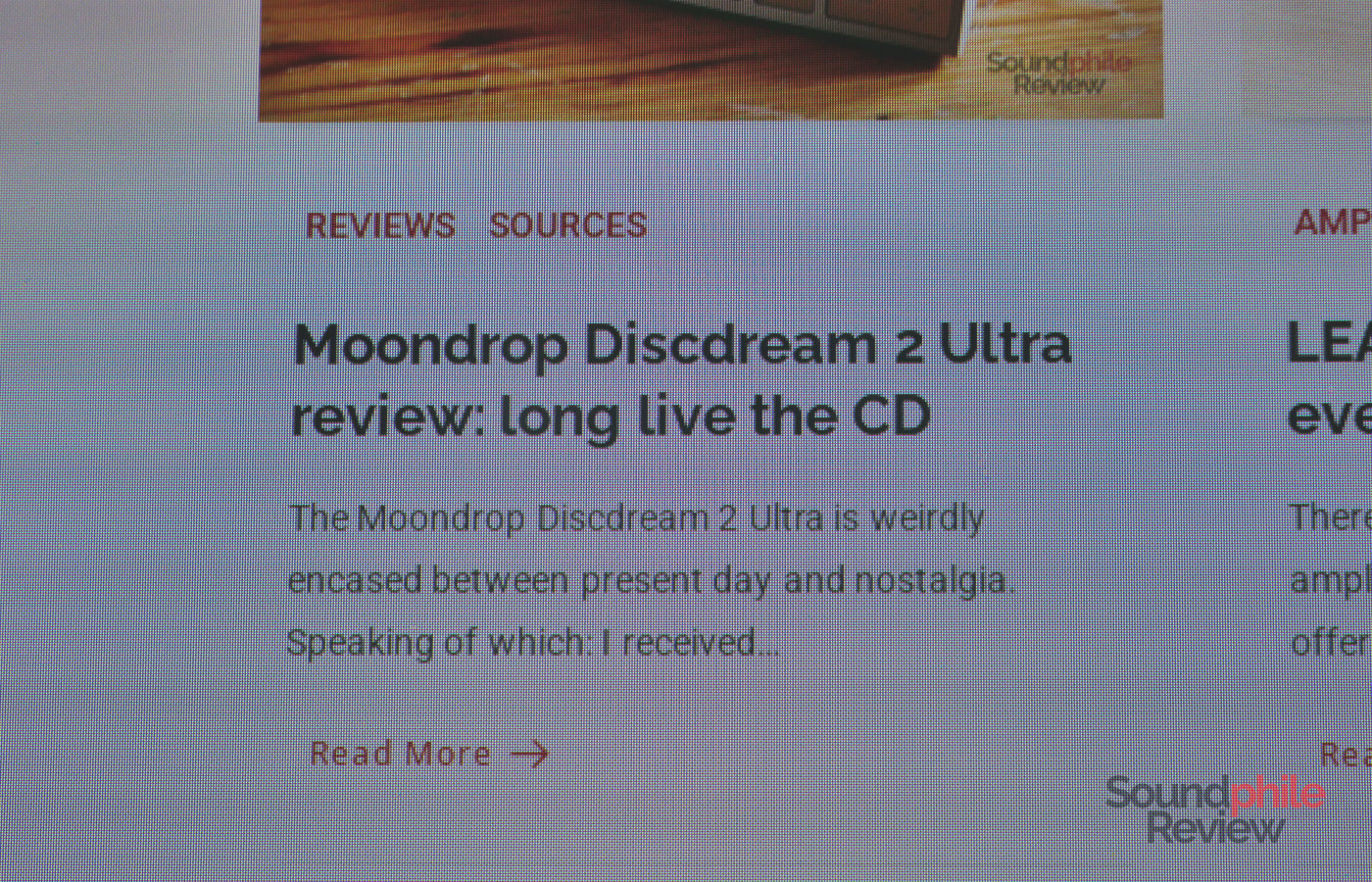
When it come to sharpness, the UColor O2 boasts an impressive 212 PPI, which is enough to make individual pixels disappear – at any distance.
Maximum brightness is indeed high, though I found it comparable to my ASUS N53SN’s panel which is capable of 270 nits – which is just a little more than half the rated brightness. It should also be noted that brightness can only be adjusted by increments of 5% – which often leads to one level being too low and the next being too high.
One thing to keep in mind with the UColor O2 is that it is covered by a glass panel and it is, therefore, quite reflective. While it is not as reflective as other screens I have seen (Apple Macs tend to be absolutely terrible at this, as an example), it is definitely noticeable, especially with a high level of ambient light. This does influence the performance of the device, as it will force you to raise the brightness in high-light situations. On the other hand, though, the usage of glass means that in situations with moderate or low ambient light you will enjoy a crispier image than many matte finishes allow.
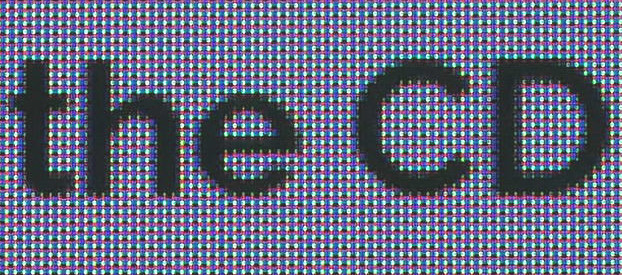
In order to test the UColor O2, I have worked on it, surfed the Web, edited some pictures (including those of this very own review!) and did some gaming as well by connecting it to my Steam Deck. The UColor O2 fares best in gaming, as the colours just pop out and are a joy to see; the deep blacks really do add to the experience. I played Avatar: Frontiers of Pandora, which is extremely colourful due to its fantastic setting, and the colours were stunning, with the deep blacks allowing the other colours to stand out even more. Surfing the Web is also an excellent experience, although the difference to an LCD panel is less noticeable here. Picture editing was also very pleasant as the colour accuracy and breadth meant I could edit the pictures without issues.
Despite the speakers being very small, they are capable of quite a high volume, enough to fill a medium-sized room. When it comes to quality, it is surprisingly good for the type of device and given all the various inherent limits: upper mids are prevalent like you would expect, but there is even a bit of bass, though highs are lacking in both quantity and detail. In other words, listening to music isn’t really any better than using your laptop, but video content should be fine as long as it is mostly spoken content.
Final Thoughts
The era of affordable OLED displays is upon us. We have seen this technology slowly getting more and more affordable over the years, with large TVs now available for (sometimes well) under the $1,000 mark. We’re now seeing OLED coming to the computer space, and the UPERFECT UColor O2 is a great example of this trend. Now, I think that we need to add a bit of context to the claim I wrote at the beginning of the article, that the UPERFECT UColor O2 comes with an affordable price tag. $400 is not cheap, but it is something many people would be able to afford without breaking the bank. It is in line with mid-range monitors you can find in many shops, be they online or physical. It is also interesting to note that the new 120 Hz OLED model is a lot more affordable than the previous UColour O, which costed $619 (though that one had a 4K panel and a built-in battery, so the price difference appears to be justified by the specs as well).
The UColor O2 has a whole lot to offer: great colours (although some adjustments are needed), superbly deep blacks, high enough brightness, HDR compatibility, and decent enough audio output, comparable to that of notebooks. All in all it is a very compelling device with very few drawbacks. The only significant one I would like to mention is the reflective glass, which can make it difficult to work with the monitor in highly bright contexts. Everything considered, it is a fantastic portable screen which rivals well-known brands and offers high quality for an affordable price. Heartily recommended!

